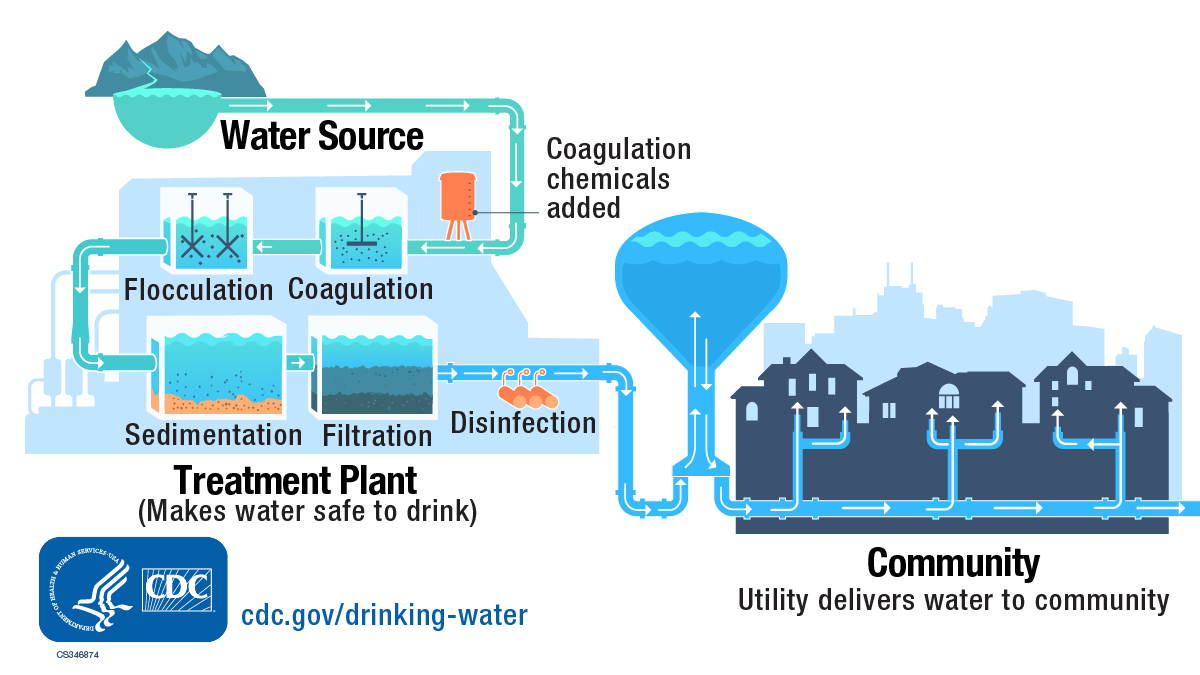Discover Just How Water Therapy Polymer Functions in Efficient Wastewater Treatment Systems
The assimilation of water therapy polymers into wastewater treatment systems stands for a considerable development in enhancing functional effectiveness. Comprehending the specific kinds of polymers and their applications can expose deeper understandings into optimizing therapy processes.
Overview of Water Therapy Polymers
The efficiency of wastewater management pivots on the application of different therapy representatives, among which water therapy polymers play a critical duty. These synthetic or natural polymers are created to enhance the performance of physical and chemical processes in wastewater therapy systems. Their main feature is to assist in the aggregation of put on hold particles, inevitably improving the total quality of cured water.
Water therapy polymers can be classified into numerous groups, including flocculants, coagulants, and dispersants. Coagulants reduce the effects of the costs of suspended particles, enabling them to come with each other and settle much more successfully.
The application of these polymers not just enhances the removal of pollutants however additionally maximizes the operational efficiency of treatment plants. Furthermore, the option of ideal water treatment polymers is essential, as their efficiency can differ based on variables such as water chemistry, temperature level, and turbidity levels. In general, water treatment polymers are vital components in modern-day wastewater management strategies, adding to cleaner water and lasting environmental practices.
Devices of Coagulation and Flocculation
Coagulation and flocculation are fundamental procedures in wastewater treatment that embody the concepts of particle communication and aggregation. These mechanisms are vital for eliminating put on hold solids, colloids, and various other contaminants from water.
Adhering to coagulation, flocculation occurs, identified by the gentle blending of water to motivate the development of larger accumulations, or flocs. During this stage, polymers play a considerable duty by connecting in between particles, boosting the formation of these bigger aggregates. The physical and chemical interactions throughout flocculation cause a raised size and thickness of the fragments, facilitating their succeeding removal with sedimentation or purification.
The effectiveness of coagulation and flocculation procedures is influenced by different variables, including pH, temperature level, and the nature of the contaminants present. Recognizing these mechanisms enables for the optimization of wastewater therapy systems, leading to enhanced elimination efficiencies and overall water high quality. The mindful option and application of coagulants and flocculants are important for effective wastewater monitoring.
Sorts Of Water Treatment Polymers
Frequently used in wastewater therapy, water therapy polymers are crucial for enhancing the efficiency of coagulation and flocculation processes. These polymers can be extensively classified right into 3 major types: anionic, cationic, and non-ionic.
Anionic polymers, which bring a negative cost, are specifically efficient in treating wastewater with positively billed impurities. Alternatively, cationic polymers possess a positive cost and are usually made use of in applications where negatively charged particles control, such as in certain industrial effluents.
Non-ionic polymers, doing not have a charge, offer as flexible agents that can boost the performance of both anionic and cationic polymers. Their key duty involves enhancing the thickness of the wastewater, thereby boosting the general retention time of the flocs in the treatment system.
Comprehending the distinct characteristics of these types of water therapy polymers permits for the optimization of wastewater treatment processes, eventually resulting in improved removal efficiencies and better water quality.
Applications in Wastewater Therapy

In local wastewater therapy plants, water treatment polymers aid decrease the quantity of sludge produced throughout the therapy procedure. water treatment polymer. This reduction not just enhances operational efficiency but also lessens disposal prices connected with sludge monitoring. Additionally, polymers contribute in dealing with commercial effluents, where they help in the removal of details impurities such as heavy steels and natural toxins, guaranteeing compliance with environmental policies

Additionally, water treatment polymers are utilized in the enhancement of biofiltration systems, where they improve microbial task and total therapy efficiency. Their duty in membrane site link layer processes, such as reverse osmosis, also can not be overlooked, as they add to membrane layer fouling control and extend the life expectancy of filtration systems. Through these varied applications, water therapy polymers are vital for accomplishing effective and lasting wastewater management.

Advantages of Utilizing Polymers
Making use of water therapy polymers in wastewater systems provides various advantages that substantially enhance therapy effectiveness and total operational efficiency. These polymers act as effective coagulants and flocculants, advertising the gathering of suspended solids and promoting their removal. This procedure leads to more clear effluent and reduces the problem my blog on downstream treatment stages.
In addition, polymers enhance the dewatering procedure by enhancing the sedimentation attributes of sludge. This results in minimized quantity and weight of waste material, eventually decreasing disposal costs. In addition, their ability to work throughout differing pH levels and temperature levels makes certain flexibility in various wastewater settings.
Polymers likewise add to the stablizing of organic processes by offering nutrients and preserving optimum problems for microbial development - water treatment polymer. This bolstered microbial activity aids in the malfunction of natural issue, boosting total treatment efficiency
Additionally, the use of polymers can cause minimized chemical use, decreasing functional prices and ecological influence. By optimizing the treatment procedure and improving sludge management, water therapy polymers play an essential function in promoting lasting wastewater monitoring techniques, straightening with governing requirements and ecological goals.
Final Thought
Finally, water treatment polymers are vital for improving the efficiency of wastewater treatment systems. Their ability to promote coagulation and flocculation procedures causes enhanced sedimentation and decreased sludge volume, thereby maximizing therapy efficiency. The various kinds of polymers readily available for various applications make sure versatility across varied conditions, ultimately causing more clear effluent. The benefits of utilizing these polymers emphasize their relevance in accomplishing effective and check that inexpensive wastewater administration services.